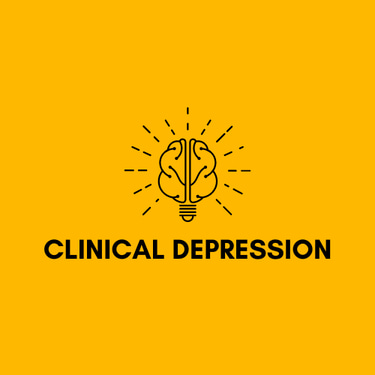For Questions: Text (833)233-0869
Anxiety Disorders Telehealth: A Comprehensive Guide


Anxiety disorders affect millions of people worldwide, making them one of the most common mental health issues today. These disorders can significantly impact a person’s quality of life, leading to physical symptoms, emotional distress, and impaired daily functioning. Traditionally, anxiety disorders have been treated through in-person therapy sessions and medication. However, with the advent of technology, telehealth has emerged as a powerful tool for managing and treating anxiety disorders. In this article, we will explore how telehealth can be used to effectively manage anxiety disorders, the benefits it offers, and how you can access telehealth services for anxiety treatment.
What Are Anxiety Disorders?
Anxiety disorders are a group of mental health conditions characterized by excessive fear, worry, or nervousness. While it’s normal to experience anxiety in response to stress, anxiety disorders involve persistent and overwhelming anxiety that interferes with daily life. Some of the most common types of anxiety disorders include:
Generalized Anxiety Disorder (GAD): Characterized by chronic worry about everyday events and situations.
Panic Disorder: Involves sudden and intense episodes of fear, known as panic attacks.
Social Anxiety Disorder: Fear of social situations and being judged by others.
Specific Phobias: Intense fear of specific objects or situations, such as heights, spiders, or flying.
Obsessive-Compulsive Disorder (OCD): Involves repetitive thoughts (obsessions) and behaviors (compulsions).
Post-Traumatic Stress Disorder (PTSD): Anxiety and flashbacks triggered by a traumatic event.
Each of these disorders can have a profound impact on a person’s life, making it essential to seek treatment.
The Rise of Telehealth in Treating Anxiety Disorders
Telehealth refers to the use of digital communication technologies, such as video conferencing, phone calls, and online platforms, to provide healthcare services remotely. In recent years, telehealth has gained immense popularity, especially in the field of mental health. The COVID-19 pandemic further accelerated the adoption of telehealth as it provided a safe and convenient way for patients to access care without leaving their homes.
Telehealth has proven to be particularly effective for treating anxiety disorders. Many people with anxiety disorders find it difficult to attend in-person therapy sessions due to their symptoms. Telehealth offers a flexible and accessible alternative, allowing patients to receive treatment from the comfort of their own homes.
Benefits of Telehealth for Anxiety Disorders
Telehealth offers numerous benefits for individuals seeking treatment for anxiety disorders. Here are some of the key advantages:
1. Accessibility and Convenience
One of the most significant advantages of telehealth is its accessibility. People living in rural or remote areas often face challenges in accessing mental health services due to the lack of nearby providers. Telehealth bridges this gap by allowing patients to connect with licensed therapists and psychiatrists from anywhere with an internet connection. Additionally, telehealth eliminates the need for travel, making it easier for individuals with mobility issues or those with busy schedules to receive care.
2. Reduced Stigma
For many individuals, the stigma associated with seeking mental health treatment can be a barrier to getting help. Telehealth offers a more private and discreet way to access therapy, which can reduce the fear of judgment. This increased privacy may encourage more people to seek treatment for their anxiety disorders.
3. Flexibility in Scheduling
Telehealth allows for more flexible scheduling options compared to traditional in-person appointments. Patients can choose appointment times that fit their schedules, including evenings and weekends. This flexibility is particularly beneficial for individuals who may have work or family commitments that make it challenging to attend regular therapy sessions.
4. Continuity of Care
For individuals who travel frequently or have relocated, telehealth provides continuity of care by allowing them to continue working with their existing therapists or psychiatrists. This consistent support is crucial for managing anxiety disorders, as it ensures that treatment is not interrupted.
5. Comfort of Home Environment
For many people with anxiety disorders, leaving home and attending in-person therapy sessions can be anxiety-provoking in itself. Telehealth allows patients to engage in therapy from the safety and comfort of their own homes, which can reduce anxiety and create a more relaxed environment for treatment.
Types of Telehealth Services for Anxiety Disorders
Telehealth encompasses a wide range of services that can be tailored to meet the needs of individuals with anxiety disorders. Some of the most common telehealth services include:
1. Online Therapy (Teletherapy)
Online therapy, also known as teletherapy, involves conducting therapy sessions via video conferencing, phone calls, or messaging platforms. Licensed therapists use evidence-based approaches such as Cognitive Behavioral Therapy (CBT), Exposure Therapy, and Dialectical Behavior Therapy (DBT) to help patients manage their anxiety. Teletherapy sessions are similar to in-person sessions, with the therapist guiding the patient through various therapeutic techniques and strategies.
2. Psychiatric Telehealth
Psychiatric telehealth involves remote consultations with psychiatrists who can diagnose anxiety disorders, prescribe medications, and monitor treatment progress. For individuals with more severe anxiety symptoms, psychiatric telehealth offers a convenient way to receive medication management without the need for frequent in-person visits.
3. Self-Help Apps and Online Programs
There are numerous self-help apps and online programs designed to support individuals with anxiety disorders. These programs often include guided meditations, relaxation exercises, journaling prompts, and CBT-based exercises that can be accessed anytime, anywhere. While these apps and programs may not replace therapy, they can be valuable tools for managing anxiety on a day-to-day basis.
4. Support Groups
Telehealth also provides access to virtual support groups for individuals with anxiety disorders. These groups allow participants to connect with others who share similar experiences and challenges. Support groups can offer emotional support, practical advice, and a sense of community, all of which are essential for managing anxiety.
How to Access Telehealth Services for Anxiety Disorders
If you’re interested in accessing telehealth services for anxiety disorders, there are several steps you can take:
1. Find a Licensed Provider
The first step is to find a licensed therapist or psychiatrist who offers telehealth services. Many mental health providers now offer telehealth as an option, and you can search for providers through online directories, mental health organizations, or your insurance provider’s network. Be sure to verify that the provider is licensed to practice in your state.
2. Schedule an Initial Consultation
Once you’ve found a provider, schedule an initial consultation to discuss your symptoms and treatment goals. This consultation will help determine whether telehealth is a suitable option for you and allow you to ask any questions you may have about the process.
3. Prepare for Your Telehealth Session
Before your telehealth session, ensure that you have a reliable internet connection and a private, quiet space where you can talk openly with your provider. You may also want to test your video conferencing platform ahead of time to ensure that everything is working smoothly.
4. Attend Regular Sessions
Consistency is key when it comes to treating anxiety disorders. Make a commitment to attend regular telehealth sessions and actively participate in your treatment plan. Your provider may also recommend additional resources, such as self-help exercises or support groups, to complement your therapy.
Challenges of Telehealth for Anxiety Disorders
While telehealth offers many benefits, it’s important to be aware of potential challenges:
1. Technology Barriers
Not everyone has access to the necessary technology for telehealth, such as a reliable internet connection or a computer with a webcam. For some individuals, these technology barriers can make it difficult to participate in telehealth services.
2. Privacy Concerns
Maintaining privacy during telehealth sessions can be challenging, especially for individuals who live in shared housing or have limited access to private spaces. It’s essential to find a quiet and secure location for your sessions to ensure confidentiality.
3. Limited Nonverbal Communication
In-person therapy allows therapists to observe a patient’s body language and nonverbal cues, which can provide valuable insights into their emotional state. Telehealth, especially phone-based therapy, may limit the therapist’s ability to pick up on these cues, potentially impacting the effectiveness of the treatment.
4. Insurance Coverage
While telehealth is becoming more widely accepted, not all insurance plans cover telehealth services for mental health. It’s important to check with your insurance provider to understand what is covered and whether there are any out-of-pocket costs.
Conclusion
Telehealth has revolutionized the way anxiety disorders are treated, offering a convenient, accessible, and effective alternative to traditional in-person therapy. Whether you’re struggling with generalized anxiety, social anxiety, or any other anxiety disorder, telehealth provides a flexible and supportive environment for managing your symptoms and improving your quality of life. By understanding the benefits and challenges of telehealth, you can make an informed decision about whether it’s the right option for you. If you’re ready to take the first step towards managing your anxiety, consider exploring telehealth services today.
©2025
Clinical Depression
For Questions: Text
(833) 233-0869
